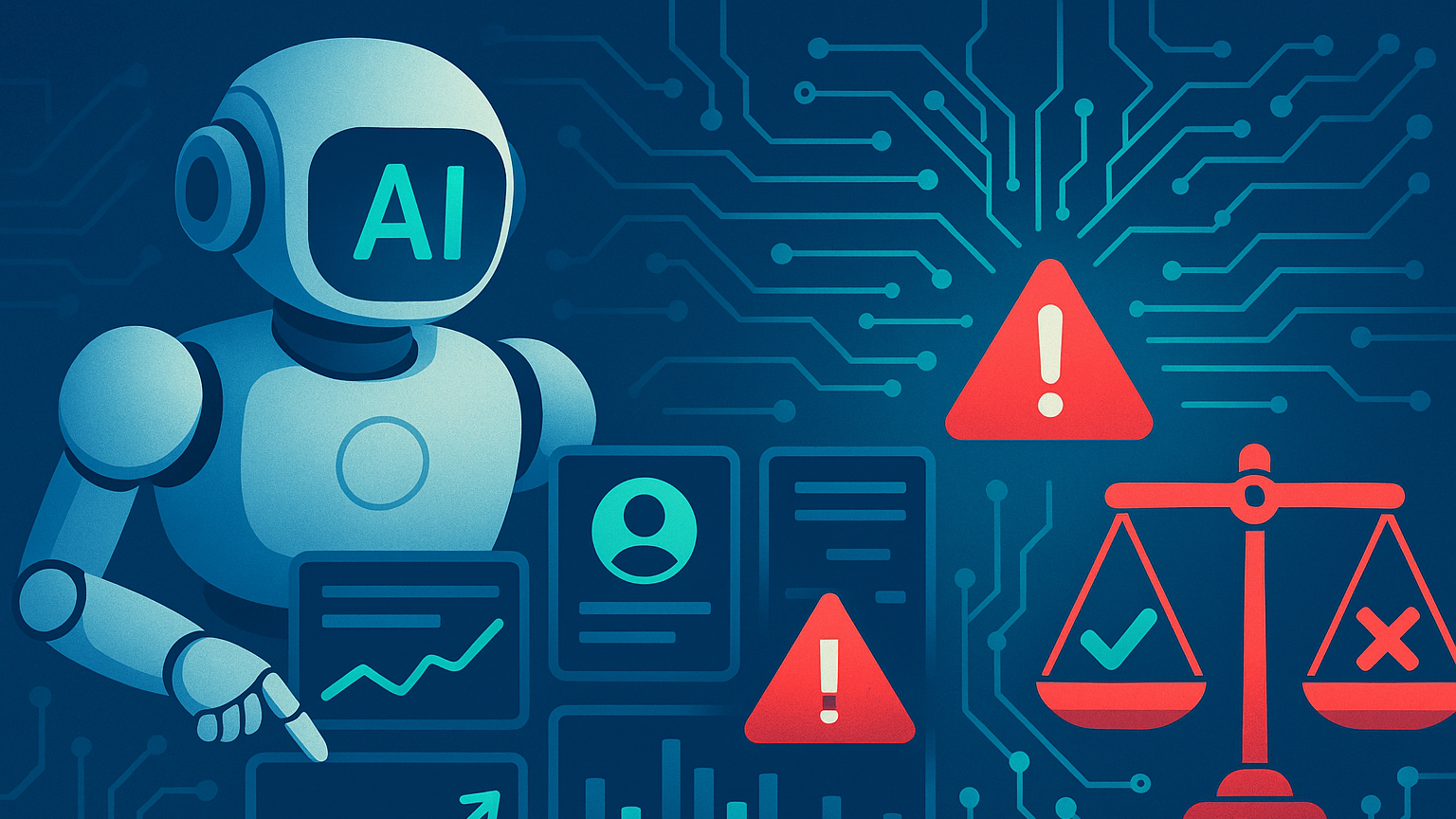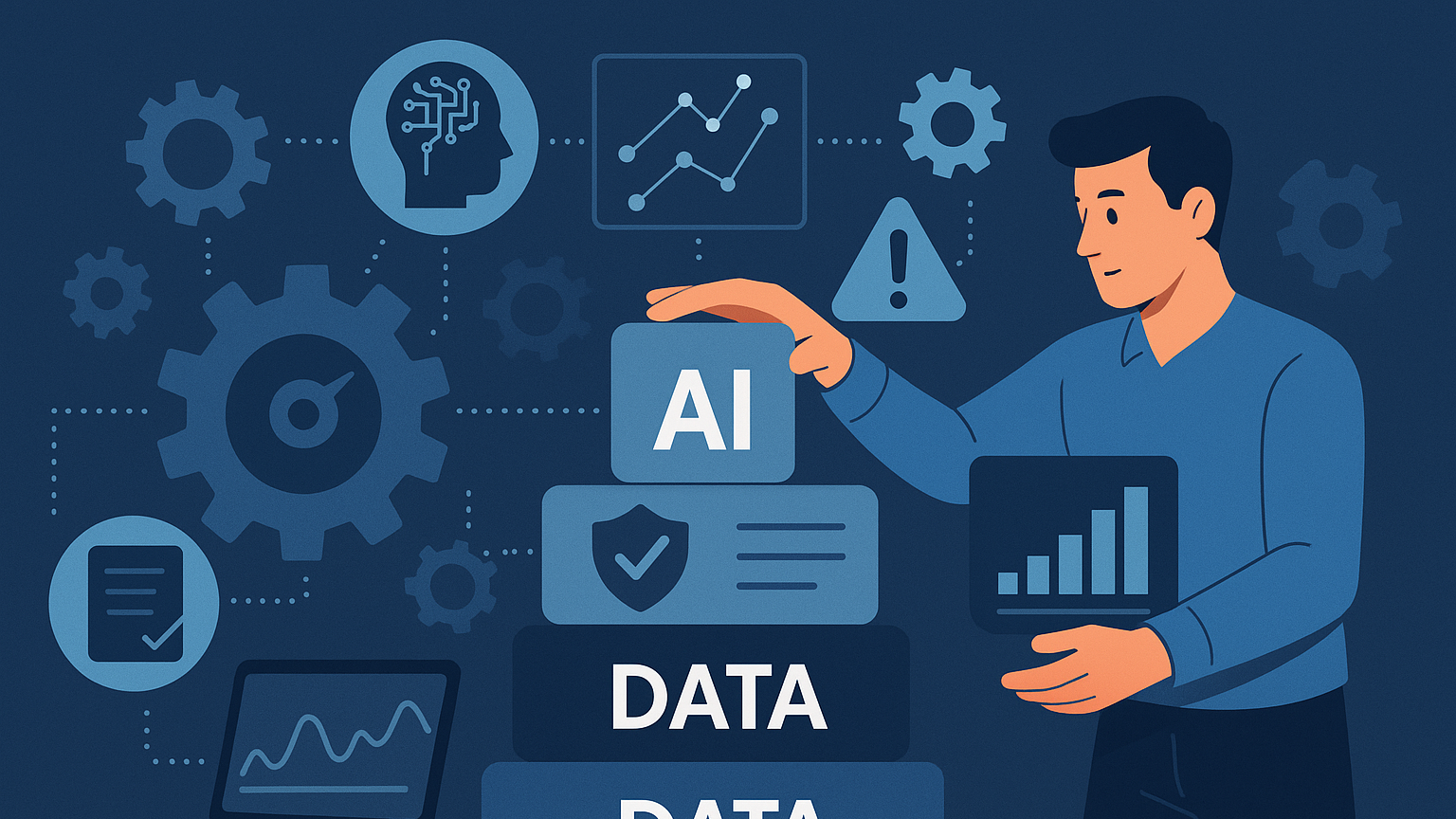Automated control implementation with AI in Risk Management and Compliance
You’re operating in an environment where regulations tighten, threats evolve, and executives expect faster, more reliable assurance that controls are working. Automated control implementation with AI promises to take you beyond manual checklists and rigid rules into a world where controls adapt, surface issues earlier, and let you focus scarce human judgment on the exceptions that matter. This article walks you through what that looks like in practice, why it matters for different business areas, and the steps you can take to design, implement, govern, and continuously refine AI-enabled automated controls.

Why AI-driven automated controls matter now
You’re seeing three forces converge: an explosion of data and digital transactions, increased regulatory and stakeholder scrutiny, and advances in AI and automation technologies. Together, these forces make manual control execution and periodic checks inefficient and risky. AI-driven automated controls can continuously monitor behavior, detect anomalies, and trigger corrective actions in near real time. They can reduce false positives, scale control coverage across processes, and free your compliance and risk teams to focus on strategic issues rather than repetitive work.

How AI changes the work of risk and compliance professionals
AI doesn’t remove your role — it reshapes it. Instead of collecting spreadsheets and running rule-based queries, you’ll be designing control objectives, defining tolerance levels, interpreting model outputs, and managing exceptions. Your work will lean more on data literacy, model oversight, process redesign, and stakeholder communication. You’ll be both the user and the steward of smart systems that automate routine assurance tasks and surface signals for human judgment.
Key benefits of automating controls with AI
When you implement AI for controls, you can expect reduced detection time, fewer false alarms, broader process coverage, and better auditability. This reduces operational losses and compliance costs while improving responsiveness to incidents. A mature AI-enabled control framework will provide continuous assurance, stronger change controls, and an auditable trail showing how controls adapt over time and why decisions were made.
Where AI-driven automated controls are most effective
You’ll find quick wins in areas with high data volumes, repetitive patterns, and where human review is currently a bottleneck. Typical domains include transaction monitoring for AML and fraud, access controls and identity management, vendor and third-party risk assessments, regulatory reporting validation, and policy compliance monitoring. In each case, AI can help you detect unexpected behavior, prioritize investigations, and automate routine remediation steps.
Designing AI-enabled control frameworks
You need a control framework that blends classical risk principles with AI realities. Start with clear control objectives and risk appetite statements. For each control, define what “normal” and “exception” mean, the data sources you’ll rely on, and the actions that the system is allowed to take autonomously versus those requiring human intervention. Design for explainability and auditability from the start to help you and regulators understand decisions.

Defining control objectives and performance targets
Every control must trace back to a specific risk or regulation. You should articulate expected performance metrics (e.g., detection rate, false positive rate, time to detection) and set thresholds that align with your risk appetite. When objectives are clear, you can evaluate whether an AI model is fit for purpose and whether automation yields the business value you expect.
Choosing the right automation boundary
You’ll need to decide how much autonomy to grant an AI system. Some controls can be fully automated — for example, blocking a transaction when fraud risk exceeds a high threshold — while others should remain “human-in-the-loop” where the system suggests actions but a person approves them. Choose boundaries based on impact, regulatory constraints, and operational tolerance for error.
Data requirements and lineage
AI models are only as good as the data they consume. You must inventory data sources, assess data quality, and document lineage so you can trace a decision back to its inputs. Data completeness, timeliness, and consistency are critical for reliable controls. Invest in data engineering and governance processes that make data production reliable and auditable.
Types of AI techniques useful for automated controls
Different problems call for different techniques. Supervised learning works well when you have labeled examples (e.g., past fraud cases), unsupervised approaches can surface novel anomalies, and rule-based systems remain effective for deterministic checks. Hybrid approaches often work best: AI for detection and risk scoring, combined with deterministic rules and business logic for enforcement.

Supervised models for classification and scoring
If you have historical labeled outcomes (fraud, breach, policy violation), supervised models like gradient-boosted trees or neural networks can learn patterns to predict risk scores. You’ll use these models for transaction scoring, claim assessment, or compliance checklists where prior examples exist.
Unsupervised models and anomaly detection
When labeled data is scarce or threats evolve quickly, unsupervised techniques can detect deviations from normal patterns. Clustering, density estimation, and autoencoders can flag unusual user behavior, sudden spikes in transaction flows, or abnormal access patterns. These methods are excellent for early warning signals and covering emergent risks.
Natural Language Processing (NLP)
NLP helps you automate controls where unstructured text matters: contract compliance, policy violation detection, regulatory change monitoring, and KYC documentation review. NLP can extract entities, classify sentiment, and summarize long documents to help you assess compliance automatically.
Reinforcement learning and decision automation
In some advanced scenarios, reinforcement learning can optimize sequential decisions, such as tuning dynamic risk thresholds or allocating investigation resources. These are more complex to govern, but they can improve long-term outcomes where feedback loops and evolving environments exist.
Building the technology stack
You’ll assemble a stack that integrates data ingestion, model development, deployment, monitoring, and downstream enforcement. The stack should support modularity (so you can swap models), explainability (so you can interpret decisions), and a clear audit trail.

Data layer
Your data layer ingests streaming and batch sources, normalizes fields, and stores lineage metadata. It must ensure data quality checks and provide a single source of truth for risk-relevant attributes. Tools like data lakes, streaming platforms, and metadata stores are typical building blocks.
Model development and tooling
Use robust ML tooling for experiment tracking, feature stores, and version control. Feature stores reduce duplication and ensure consistency between training and inference. Experiment tracking helps you compare models and justify selections during audits.
Deployment and inference
You’ll need scalable, low-latency inference capabilities for real-time controls and asynchronous batch scoring for periodic checks. Flexibility in deployment (cloud, on-premises, hybrid) matters for regulatory and latency requirements.
Control orchestration and enforcement
An orchestration layer coordinates signals, applies business rules, and executes enforcement actions (alerts, blocks, account holds, remediation workflows). This layer should be auditable and support human overrides.
Monitoring and observability
Continual monitoring tracks model drift, feature distribution changes, and control effectiveness. Observability tools must capture metrics, logs, and inputs so you can detect degradation and investigate incidents.
Model risk management and validation
When you automate controls with AI, you introduce model risk. You must validate models before deployment and maintain continuous validation. Validation includes performance testing, stress testing, sensitivity analysis, bias and fairness checks, and scenario-based assessments that reflect worst-case behaviors.
Establishing a model governance framework
You should define policies for model approval, versioning, access controls, and retirement. Model governance ensures that models are documented, tested, and meet standards for explainability and reproducibility. Make model owners accountable for periodic reviews and validation outcomes.
Independent model validation
An independent team should validate significant models to provide an impartial assessment. They’ll re-run experiments, verify data lineage, check feature integrity, and confirm that explanations align with expected behavior. This is especially important for high-impact controls.
Explainability, transparency, and regulatory expectations
Regulators and internal stakeholders will ask why a control made a decision. You must prepare to explain model outputs, especially when automated controls block legitimate business actions. Use explainability techniques (feature importance, SHAP values, counterfactuals) and translate them into business-friendly narratives. Documenting decision logic and providing human-readable justifications reduces friction in audits and regulatory reviews.
Communicating explanations to non-technical stakeholders
You’ll need to build explanations that answer business questions: What triggered this alert? Which behaviors were unusual? Why was this action taken? Avoid technical jargon and present rationales that compliance officers, auditors, and business owners can validate.
Integrating human judgment: Human-in-the-loop design
You shouldn’t expect AI to handle every edge case. Build workflows where humans review flagged exceptions and provide feedback that retrains or adjusts models. Human-in-the-loop ensures that rare, high-impact cases receive careful attention and that your models benefit from curated corrections.
Designing feedback loops
Capture review decisions and context to feed back into the training pipeline. Structured feedback enables you to reduce false positives and to adapt to shifting patterns. Make feedback collection easy and integrated into the analyst’s workflow to maximize participation.

Continuous monitoring and lifecycle management
AI models and controls degrade if left unmaintained. You must monitor model performance, business impact, and data drift. Establish thresholds that trigger retraining, recalibration, or investigation. Lifecycle management extends from initial deployment through periodic review, versioning, retirement, and archival.
Metrics to track continuously
Key operational metrics include detection rate, false positive rate, precision/recall, time-to-detect, and mean time to remediate. Additionally, track business impact metrics like reduced loss, reduced manual review hours, and compliance incident counts. Use these metrics to inform investment and governance decisions.
Security, privacy, and data protection
You’re dealing with sensitive data in compliance contexts, so security and privacy must be baked into your design. Apply least privilege, encryption-at-rest and in-transit, and secure model access. Privacy-preserving techniques like differential privacy and federated learning can help you build effective controls without centralizing sensitive data.
Handling personal data and regulatory constraints
Regulatory frameworks like GDPR, CCPA, and sector-specific rules require strong controls around personal data. You must document lawful bases for processing, data retention policies, and mechanisms for subject rights. Where models use personal data for inference, ensure you can respond to access and deletion requests appropriately.
Managing bias, fairness, and ethical considerations
Automated controls can unintentionally amplify biases present in training data. You must assess for disparate impacts and ensure fairness across protected attributes. Run bias audits, incorporate fairness constraints, and consider alternative remedies if models create unjust outcomes.
Bias mitigation techniques
You can mitigate bias through data augmentation, reweighting, fairness-aware algorithms, and post-processing of outputs. Combine technical fixes with governance oversight to detect and correct unfair outcomes over time.
Change management and organizational readiness
Implementing AI-driven automated controls is as much a people and process change as it is a technology project. You’ll need executive sponsorship, cross-functional collaboration, and upskilling. Compliance teams must learn to interpret model outputs, IT needs to integrate systems securely, and business units must adjust to new workflows.
Training and skill development
Provide role-based training: data science teams need model risk knowledge, compliance must learn to question and interpret models, and business users should know how to respond to automated actions. Invest in continuous learning so staff remain confident in interacting with AI systems.
Vendor vs. build considerations
You’ll face a choice between buying pre-built AI controls and building in-house. Vendors provide quick time-to-value but may limit customization and explainability. Building in-house gives you more control and auditability but requires investment in talent and infrastructure. Choose based on control criticality, available skills, integration needs, and regulatory requirements.
Questions to ask vendors
When evaluating vendors, ask about data handling practices, model explainability, validation evidence, SLAs, update cadence, and audit logs. Verify they support your deployment environment and can meet regulatory demands for transparency and portability.
Practical implementation roadmap
A structured roadmap reduces risk and accelerates value. Start small, prove value, and scale.
- Identify high-value control candidates with clear objectives and data availability.
- Build a cross-functional team including compliance, data science, engineering, and legal.
- Prepare data and establish a feature store and lineage.
- Prototype models and test in shadow mode to compare against current processes.
- Validate models and establish governance approvals.
- Deploy with clear automation boundaries and human-in-the-loop workflows.
- Monitor performance and capture feedback for retraining and tuning.
- Scale successful controls across other processes.
Running pilot projects and shadow deployments
Pilots let you validate model behavior without impacting business operations. Run models in shadow mode to compare their output with current controls and identify gaps. Shadow deployments also help you build stakeholder confidence and refine explanations.
Measuring ROI and business impact
You need to demonstrate value in tangible terms: reduced manual effort, faster detection, fewer losses, and improved compliance posture. Design your pilots with measurable KPIs, and track both direct and indirect benefits. Be realistic about initial costs for data, talent, and integration — ROI often materializes after model maturity and scaling.
Typical KPIs to quantify value
Track time savings in investigations, reduction in false positives, percentage increase in coverage, reduction in regulatory fines or remediation costs, and analyst throughput. These metrics help justify further investment and guide prioritization.
Sector-specific examples and use cases
AI-driven automated controls apply across sectors, but implementation differs by context. Below are several examples showing practical application and typical benefits.
Financial services: transaction monitoring and AML
In banking, AI augments rule-based AML systems by scoring transactions, detecting novel behavior sequences, and prioritizing alerts. Automated controls can block high-risk transactions or automatically escalate suspicious cases. Banks that leverage AI often see reduced false positives and improved investigator productivity.
Healthcare: compliance with patient data policies
In healthcare, you’ll use AI to monitor access logs and detect improper access to patient records, enforce policy-driven access controls, and automate reporting of breaches. AI helps you continuously protect sensitive patient data and maintain regulatory compliance across complex ecosystems.
Retail and e-commerce: fraud prevention and returns abuse
Retailers use AI to detect anomalous returns, fraudulent orders, and suspicious account behavior. Automated controls can flag accounts for review, block transactions with high fraud scores, or trigger adaptive authentication for risky logins. This reduces loss and improves customer trust.
Manufacturing and supply chain: vendor compliance and quality controls
You can monitor supplier performance and contractual compliance by analyzing delivery patterns, quality metrics, and communications. AI can detect deviations, trigger vendor audits, or automatically apply contractual penalties under defined conditions.
Challenges, limitations, and how to mitigate them
You’ll face common challenges: data silos, model drift, talent scarcity, false positives, and regulatory scrutiny. Mitigate these by prioritizing data governance, establishing robust monitoring, investing in cross-functional teams, and building transparent and auditable systems.
Handling model drift and evolving threats
Threats change, which causes model drift. Address drift by continuously monitoring feature distributions and model performance, running periodic retraining, and setting thresholds for automatic investigation. Maintain a library of fallback rules to preserve control coverage when models underperform.
Dealing with false positives and alert fatigue
A high false positive rate wastes analyst time and erodes trust. Tune thresholds, improve features, and incorporate feedback loops to reduce noise. Consider tiered alerting so low-confidence items route to automated remediation or low-touch review while high-confidence cases escalate.
Regulatory landscape and compliance obligations
Regulators are increasingly focused on model governance, explainability, and accountability for automated decisions. Guidance from financial regulators, data protection authorities, and sector-specific agencies emphasizes robust documentation, independent validation, and human oversight for AI used in high-stakes contexts.
Preparing for audits and regulatory reviews
Document decisions, model validation reports, data lineage, training records, and post-deployment performance. Ensure your audit trail shows who approved the model, when validations occurred, what thresholds were set, and the outcomes of exception reviews. This evidence reduces friction in regulatory reviews.
Future trends and where to focus next
You’ll see continued advances in explainable AI, privacy-preserving techniques, and low-code model deployment tools that will lower barriers. Expect more regulatory clarity and sector-specific guidance, pushing firms to formalize AI governance. Invest in modular architectures and human-centric design so you can adapt as AI capabilities and rules evolve.
Emerging capabilities to watch
Look out for real-time streaming analytics tied to AI controls, more robust counterfactual explanation tools, and automated remediation engines that couple detection with safe, auditable actions. These will make your controls smarter and faster while preserving accountability.
Final checklist before you automate a control
Before you flip the switch, ensure you’ve addressed the essentials:
- Control objective and risk appetite are clearly defined.
- Data lineage and quality are established.
- Appropriate model validation and governance processes are in place.
- Automation boundaries and escalation paths are documented.
- Explainability and auditability are ensured.
- Human-in-the-loop workflows and feedback mechanisms exist.
- Monitoring, retraining, and incident response plans are ready.
This checklist helps you move from pilot to production with confidence, ensuring you balance automation benefits with operational resilience and regulatory expectations.
Conclusion
Automated control implementation with AI offers a powerful way to scale coverage, detect risks earlier, and reduce manual effort across risk management and compliance. You’ll need a blend of strong data practices, robust model governance, human-centric workflows, and clear communication to succeed. Start with targeted pilots, measure real business impact, and build governance that gives you control and transparency without stifling innovation. When you do this right, AI becomes an amplifier for your team’s effectiveness rather than a black box risk.
If you found this article helpful, please clap, leave a comment with your experiences or questions, and subscribe to my Medium newsletter for updates on AI in risk management and compliance.
